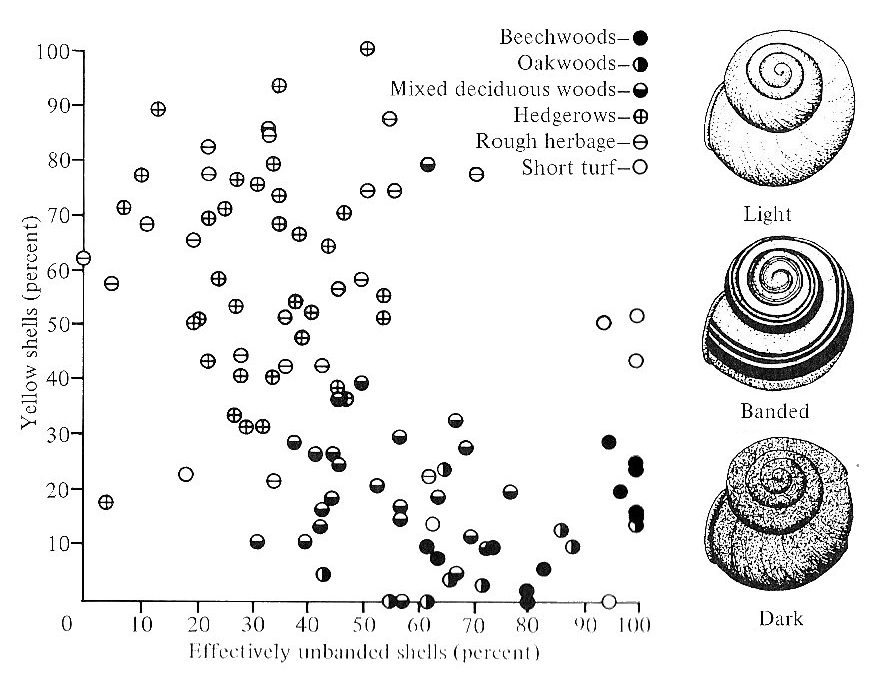
Natural
selection on crypsis Cepaea
nemoralis
Shell patterns due to the degree of banding and darker or
lighter color in the common European land snail (Cepaea
nemoralis) are determined genetically. Studies
show that visual predators such as thrushes preferentially
sight the less cryptic snails in any environment. This has
been shown experimentally by examining the remains of snail
shells at so-called "thrush anvils," large
flat rocks on which the birds drop the snails to crack them
and eat the contents. The four corners of the graph show the
environments in which each combination is more cryptic:
light banded snails in grassland (upper left), dark unbanded
snails in dimly-lit woodlands (lower right), and so on.